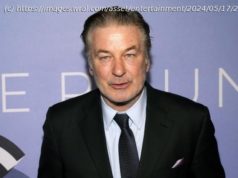Biographical film dramas used to cover a lot of ground without, as a rule, showing a lot of artistry. That all changed around the time…
Biographical film dramas used to cover a lot of ground without, as a rule, showing a lot of artistry. That all changed around the time of “Capote” (2005), a movie that employed the then-audacious strategy of focusing on a single extended chapter of Truman Capote’s life — the reporting and writing of “In Cold Blood” — and using that episode as a lens through which to take in his soul. A film like “Lincoln” (2012) went further. The entire sprawling epic was devoted to one long backroom-deal-making, arm-twisting Congressional battle, so that it felt like we were seeing Abe Lincoln operate in real time.
In biopics, less has become more. But Joe Wright’s “ Darkest Hour,” the acclaimed new drama that celebrates the iron resolve and visionary bluster of Winston Churchill, proves to be a bit of a bait and switch. The entire movie takes place over a notably short period: a singe month starting in May 1940, the first days of Churchill’s wartime tenure as Prime Minister of Britain. The tight focus implies that we’re getting the same fly-on-the-wall-of-history vantage that a movie like “Lincoln” provided. Yet don’t let the calibrated exactitude of the time frame fool you. “ Darkest Hour ” wears the finery of art, but it’s very much an old-fashioned heart-in-the-throat stiff-upper-lip rabble-rouser.
The movie is constructed as a plush pedestal for its lead performance by Gary Oldman, and he, make no mistake, is brilliant. Oldman, at a glance, is the last actor you’d think of casting as Churchill, because everything about him is sharp and dry and…well, lean. He has always brought a flinty focus to even the most baroque characters (like Sid Vicious or Dracula or Beethoven or Sirius Black). Yet in “Darkest Hour,” it’s not just the elaborate jowly makeup and padding the actor is buried under that seems to jiggle and spill in every direction. Oldman plays Churchill as a slovenly dissipated aristocrat who sputters out crystalline epigrams because it’s the only way that he can organize his personality. His mind is a lighthouse cutting through the fog of his appetites. (But it draws strength from that fog.)
His Churchill is a haunted but pleasure-loving wartime pasha, high on booze and cigars and the chance to assert his will. He’s a plummy wordsmith who has seized on a single determining idea, which is that Hitler is a madman you can’t negotiate a peace with, because any notion that you’re cutting a deal with him is simply a lie; he will not respect the limits of that deal. It’s the bulldog pugnaciousness of Churchill’s character that allows him to know that. Most of his fellow British leaders are too polite to see the nature of a man like Hitler. It takes a drunken hellion in banker’s clothing, wearing a scowl of the damned, to grasp the truth.
“Darkest Hour” views Churchill with a burnished glow of 20-20 hindsight (though there’s no question that his actions created a military context for the Allied engagement). In the film, the message of resistance is delivered with a cleansing cornball force, and with an unavoidable topical echo. “You can’t compromise with a man like X — he must simply be fought and defeated!” is an idea that applies all too starkly to our moment, and that’s part of what’s stirring about “Darkest Hour.” The film affirms the relevance of do-or-die political valor.
That said, there’s one showpiece sequence in it that you watch with your mouth agape. You know in your gut that it didn’t happen, yet it’s one of the most captivating scenes in the movie. At it unfolds, your mind says “No, no, no” but your heart says “Yes, yes, yes.”
Churchill, stymied by a Parliament that has balked at his refusal to sign a deal with Hitler, decides to pay a visit to the people who matter — that is, the working people of England. But where will he find them? He’s a man who lunches with the king (and treats him like an underling) and is driven to work in a Rolls Royce. He has never, in his entire life, taken a London Underground train. So where will he go?
He goes into the Underground, getting directions from a girl standing by the train map, and winds up in a subway car being gawked at by everyone there. He decides to talk to them — all of them. But, for once, Churchill hasn’t shown up to make a speech; he’s there to listen. He introduces himself to the citizens, communing deeply with each one of their names, and asks them whether Britain should stand tall against tyranny. The answer comes roaring back, from citizen after shining-eyed citizen: Yes! Stand against tyranny! The scene culminates with Churchill offering words of Shakespeare that are completed, in a flawless quotation, by a vibrant black Londoner. It’s all so rosy and multiculti and inspiring that you feel like you’re seeing a remake of “My Beautiful Laundrette” directed by the ghost of David Lean.
Of course, that’s what’s utterly fabricated and even eye-rolling about it. It’s a scene that’s — transparently — too good to be true. Yet it plays as Oldman’s Oscar-clinching moment: the clip that was made to be shown, in triumph, on the telecast. It’s the best scene in the movie, or the worst. Or maybe both. But what it does is to out “Darkest Hour” as an Old Hollywood movie in 21st-century clothing. Churchill, in the end, did stand up to Hitler, but in the case of a scene like this one resistance is futile.






